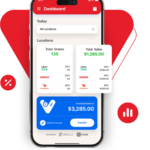While developing a program or software, guaranteeing the quality and usefulness of UIs (UI) is critical. UI automation testing has emerged for identifying essential issues or bugs in UI elements and automating the testing process. This article means to give a detailed comprehension of UI automated testing and feature the main three automated UI testing tools broadly utilized in the business.
How does UI Automation Testing work:
UI automation testing is the process of automating the testing of user interfaces to ensure their functionality and responsiveness across different devices and platforms. To validate UI elements like buttons, menus, forms, and data entry fields and simulate user interactions, this strategy makes use of specialized tools. UI automated testing helps in distinguishing UI-related abandons, guaranteeing reliable client experience, and diminishing the work expected for testing.
Advantages of UI Mechanization Testing
- Further developed Effectiveness: Testing UIs with UI automation saves time and effort when compared to testing by human. The repeatable execution of automated tests allows quicker view on the UI’s stability and dependability.
- Expanded Test Range: Covering a wide range of scenarios, including different devices, operating systems, and screen resolutions, becomes possible with UI automation testing. This makes sure that all of the tests are covered, which is hard to do with just manual testing.
- Testing for Regression: Regression testing is where UI automation testing comes in especially handy. As new elements or changes are presented, automated tests can be executed to check that current usefulness stays in salvageable shape, saving time and exertion contrasted with manual relapse testing.
Top 3 Automated UI Testing Tools
- Testsigma: Testsigma is without a doubt one of the most well-known and generally took on UI testing tools. It gives testers the ability to interact with web elements and verify their behaviour by providing a comprehensive set of tools and libraries for automating web browsers. It upholds different programming dialects, including Java, Python, C#, and Ruby, making it exceptionally flexible.
- Cypress: Due to its distinctive architecture, Cypress is rapidly gaining traction in the UI automation testing industry. It is at the forefront of end-to-end testing for web applications thanks to its features like automatic waiting, advanced debugging, and real-time reloading. Cypress is a JavaScript-based structure with a clear Programming interface that allows analysers to compose expressive tests that are basically the same as what a genuine client would do.
- Appium: An open-source automation tool specifically made for mobile applications is called Appium. It empowers UI testing on the two iOS and Android stages, permitting analysers to compose tests utilizing natural web advances like HTML, CSS, and JavaScript. Appium facilitates the automation of user interface (UI) interactions by supporting both native and hybrid mobile applications.
Conclusion
Hence, UI automation testing is a critical aspect of software development. It ensures the quality and functionality of user interfaces. The top user interface testing tools such as Cypress, Appium, and TestSigma provide important capabilities and features to streamline the testing process and improve efficiency. By leveraging these tools, organisations can enhance test coverage, detect bugs early, and deliver a seamless user experience, ultimately leading to higher customer satisfaction and success in the competitive software market.








